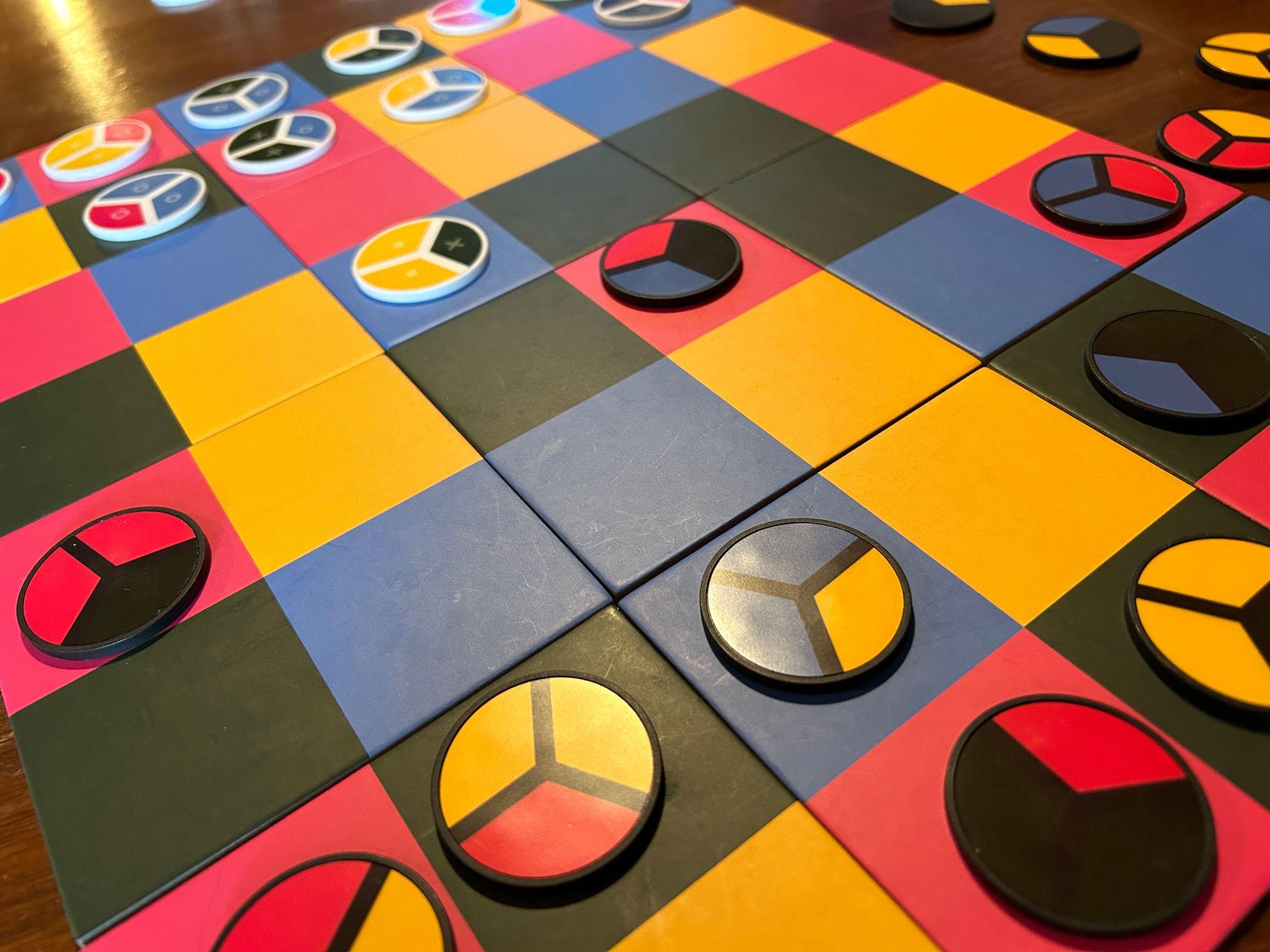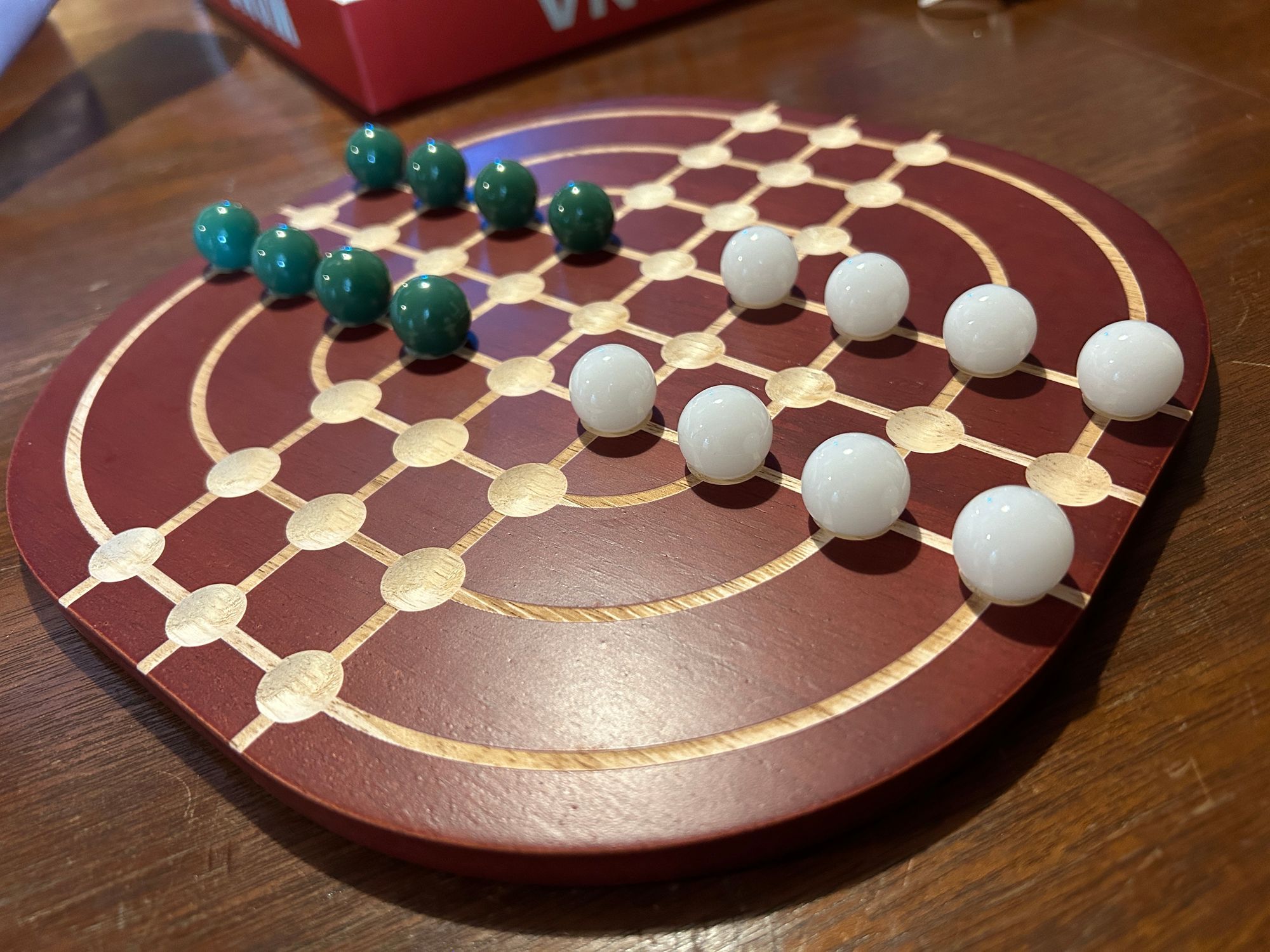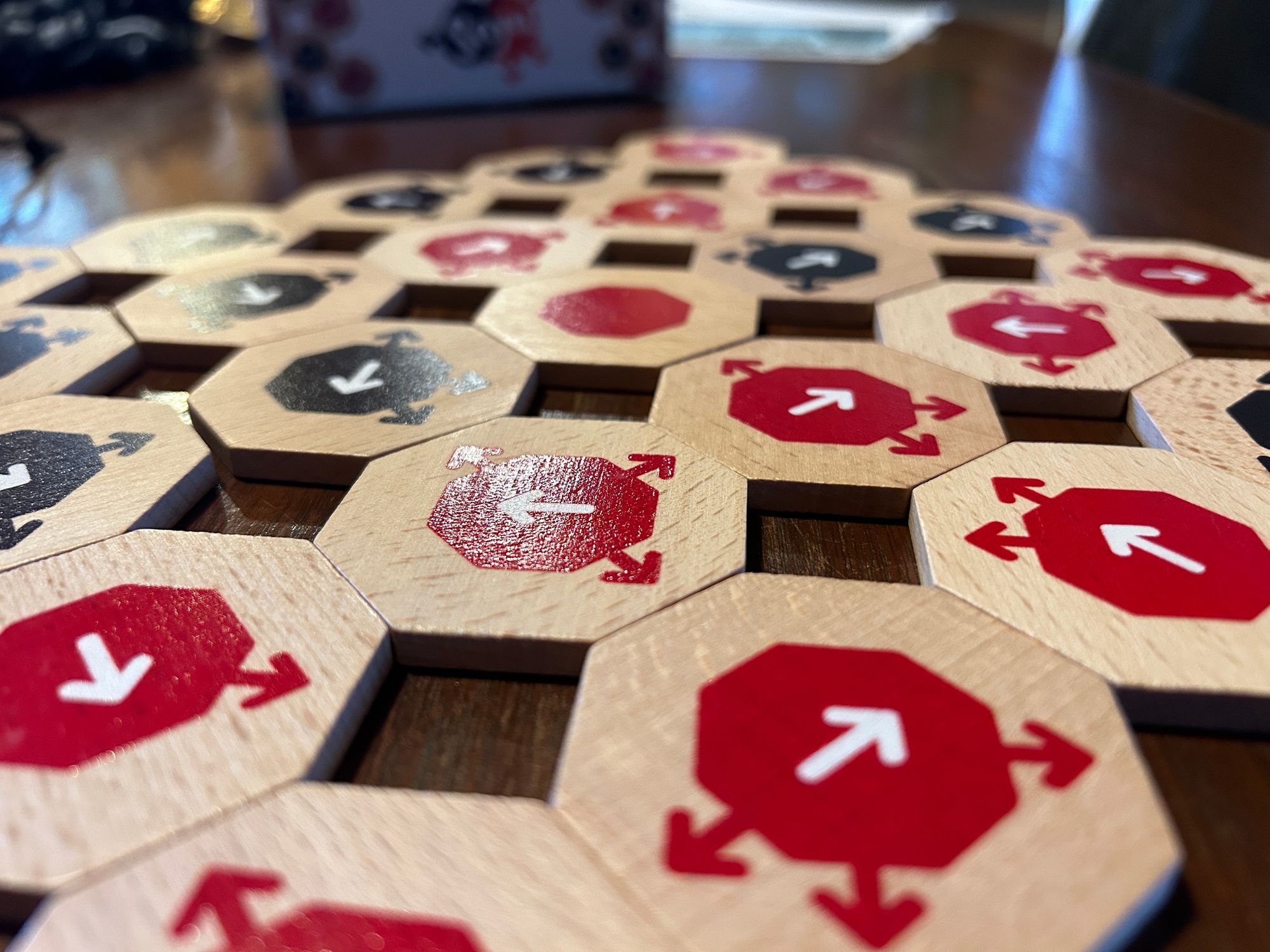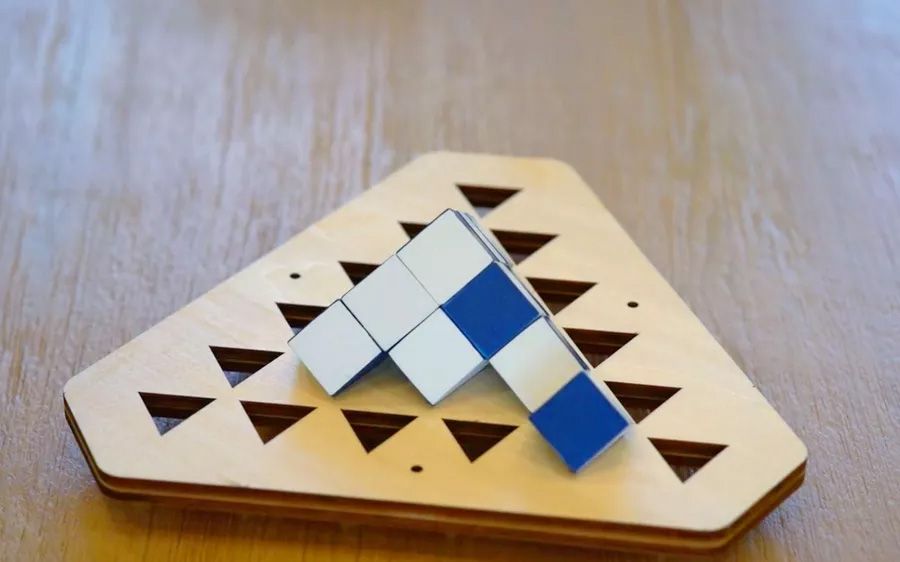During the COVID-19 lockdown, a hobbyist by the name of Khanat Sadomwattana created a Reddit thread to share a game design he’d been working on to pass the time. He called it Color Chess, a colorful abstract game with a modular board and tri-colored checkers, and a ruleset so small it would fit on the back of the box it eventually shipped in. After gaining feedback from folks and incorporating advice on accessibility and the business of game development, he completed a successful Kickstarter for Color Chess (officially released as Iro) in 2021. Since then, he’s self-published two additional two-player games, and has a new design currently being crowdfunded.
The great part about Khanat’s games is that they’re each an evolution of a common household standard, so they’re really simple to pick up. Even if you aren’t familiar with each game’s spiritual ancestor, they can be learned quickly. Even the most difficult game of the three (Sayu) only takes a few minutes to learn. All of the components are well designed and produced, and most importantly, they’re all language agnostic and designed with accessibility in mind.
Here is an overview of each of Khanat’s currently available games. Because the rules can’t be described any better than they already are on the box, I’m just going to dive into how each game feels.

Iro
Iro is a version of checkers that you’ll actually want to play. Imagine a 6x8 grid of squares in four colors: red, yellow, blue, and black. On the two rows closest to each player, imagine checkers split up into three segments, each of those segments being one of the board’s four colors. Instead of jumping, you move a checker along the board by sliding it (in any direction) based on the colored segments on its face, up to three squares away from its starting position. You can move through your checkers, but moving into an opponent’s checker captures it and ends your turn. A player wins by moving one of their checkers into an opponent's back row.
Iro lends itself to very fast, aggressive gameplay. Because you’re not waiting for an opponent’s back row to open up, you aren’t stuck in the doldrums of an opponent’s conservative play. It’s infinitely replayable with a modular board and a huge variety of checker configurations, and takes all of about two minutes to set up and tear down.

Wana
Wana looks like Chinese Checkers coupled with Parcheesi, but isn’t like either. Khanat describes Wana as being inspired by Go, in that the goal of the game is to trap your opponent. On a turn, you move one of your marbles as far as you want along one of the grooves on the board until stopping or reaching a space with another marble. Marbles can also cross through to the opposite side of the board, Pac-Man style.
Since the goal of the game is simply to trap a single opponent marble, you have to keep an eye on the entire board to make sure that as you move to set a trap, you aren’t falling into one. It’s a brain-burner in an extremely pleasant sense; games go so quickly, and often end in surprises, even though the game is entirely deterministic and players have perfect information.

Sayu
Sayu reminds me a whole lot of Reversi (aka Othello). You’re placing tiles down, flipping over your opponent’s tiles, and hoping to have a majority of pieces by the time the board is filled. The thing that sets Sayu apart from Reversi is that instead of having to surround your opponent’s tiles with ones of your color, every tile in Sayu has three arrows pointing out from its center. When a tile is placed, adjacent tiles of an opponent’s color are flipped, as long as the target tile doesn’t have an arrow pointing back in the direction of aggression. If a tile gets flipped, this can continue to chain into other opponent tiles following the same rules.
There’s a lot of opportunity for analysis paralysis when you’re searching through the large pool of tiles to find just the right one. We’ve house-ruled it so that instead of drawing from a large pool, you draw yourself a set of three tiles and play from that instead. It adds some luck to the game, but it more than makes up for the slowdown that can happen when playing without the house-rule. It’s a lot of fun, though, as it's more tactical than the other two games reviewed here.
While I haven’t played it yet, Khanat has a new game currently on Kickstarter called Yama. It is inspired by Connect Four and uses cubes set on their corners to form rows in three dimensions. Like all of his other designs, this one looks to be immediately playable and lovely to sit on a table. It’s so great to find a designer doing amazing new work in abstract strategy games. By their nature, they’re incredibly accessible, and have a broad range of audiences they can appeal to. Grab all of these if any of this sounds interesting, I’m certainly glad I did.
Iro, Wana, and Sayu
Designed by: Khanat Sadomwattana
Player Count: 2
Playtime: 15/15/30 minutes
Time to Learn: 2/2/5 minutes
Complexity: 1–2/5 (Easy to learn; difficult to master)
Replayability: 5/5
MSRP: These aren’t available at retail, but you can grab them all via his current Kickstarter for Yama at https://www.kickstarter.com/projects/khanat/yama
Written by Brendan Quinn, President of Tri-City Area Gaming. We’re out in the world again! Come play games with us at any of our regular monthly events.
All the links for Tri-City Area Gaming: tcag.carrd.co


